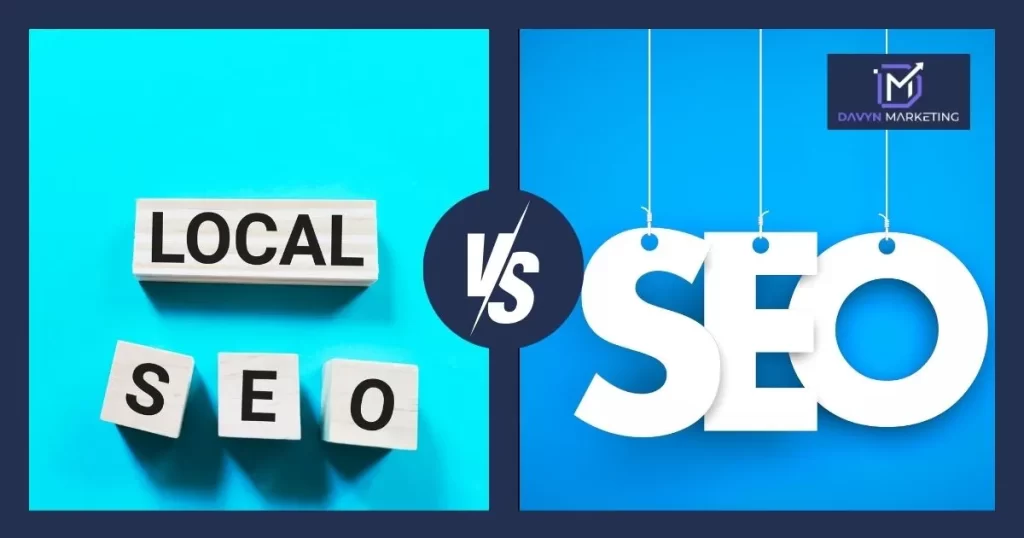
How Do Local SEO Services Differ from Traditional SEO?
Search Engine Optimization (SEO) is crucial for improving a website’s visibility on search engines. However, SEO can be broadly categorized into two types: local SEO and traditional SEO. While both aim to enhance a website’s search engine ranking, they differ in their approach and objectives. Understanding these differences is essential for businesses to choose the right strategy for their needs.
Understanding Traditional SEO
Traditional SEO focuses on improving a website’s overall visibility and ranking on search engines for a broad range of keywords. The goal is to attract visitors from various geographic locations and demographics. Key components of traditional SEO include:
- Keyword Optimization: Traditional SEO involves extensive keyword research and optimization to rank for competitive and relevant keywords. This includes optimizing on-page elements such as page titles, meta descriptions, headers, image alt texts and content.
- Content Creation: High-quality, relevant content is central to traditional SEO. Creating informative and engaging content that appeals to a wide audience helps in attracting organic traffic and building domain authority.
- Link Building: Traditional SEO emphasizes acquiring backlinks from authoritative websites. The quality and quantity of backlinks are crucial factors in improving search engine rankings and establishing credibility.
- Technical SEO: Technical aspects like site speed, mobile-friendliness, and proper indexing are essential for traditional SEO. Ensuring that the website is technically sound helps in better crawling and indexing by search engines.
- On-Page Optimization: This includes optimizing various elements on the website, such as content, meta tags, and internal linking, to improve overall search engine visibility.
Understanding Local SEO
Local SEO is a specialized branch of SEO focused on optimizing a business’s online presence to attract local customers. It is particularly important for businesses that serve specific geographic areas. Key components of local SEO include:
- Google Business Profile Optimization: Local SEO involves optimizing a business’s Google Business Profile (formerly Google My Business). This includes providing accurate business information, managing reviews, and regularly updating posts to improve local search visibility.
- Local Keywords: Local SEO focuses on incorporating location-specific keywords into content and metadata. This helps in ranking for searches that include geographic terms, such as city names or neighborhoods.
- Local Citations: Building and managing local citations on online directories and review sites is crucial for local SEO. Consistent Name, Address, and Phone Number (NAP) information across these platforms helps Google verify the business’s legitimacy and improve local search rankings.
- Localized Content: Creating content that is relevant to the local audience, such as blog posts about local events or news, helps in attracting local traffic and improving search visibility in the targeted area.
- Local Reviews and Ratings: Positive reviews on platforms like Google, Yelp, and Facebook play a significant role in local SEO. Encouraging satisfied customers to leave reviews and responding to feedback helps build trust and improve local search rankings.
Key Differences between Local SEO and Traditional SEO
Target Audience:
Traditional SEO: Aims to attract a broad, global audience.
Local SEO: Targets customers within a specific geographic area.
Optimization Focus:
Traditional SEO: Focuses on general keyword optimization, content quality, and link building.
Local SEO: Emphasizes local keyword optimization, Google Business Profile management, local citations, and localized content.
Search Results:
Traditional SEO: Results are displayed based on overall relevance and authority, regardless of location.
Local SEO: Results are tailored to users based on their geographic location and proximity to the business.
Business Listings:
Traditional SEO: Does not require managing business listings on local directories.
Local SEO: Requires accurate and consistent business listings on local directories and review sites.
Ranking Factors:
Traditional SEO: Ranking factors include content relevance, backlinks, and technical SEO aspects.
Local SEO: Ranking factors include Google Business Profile optimization, local citations, and customer reviews.
While both local and traditional SEO aim to improve search engine visibility, they cater to different needs and objectives. Traditional SEO focuses on broad visibility and traffic, while local SEO is tailored to attract customers within a specific geographic area. By understanding these differences, businesses can develop targeted SEO strategies that align with their goals and effectively reach their desired audience. For businesses with a local presence, investing in local SEO is crucial for attracting nearby customers and standing out in local search results.
